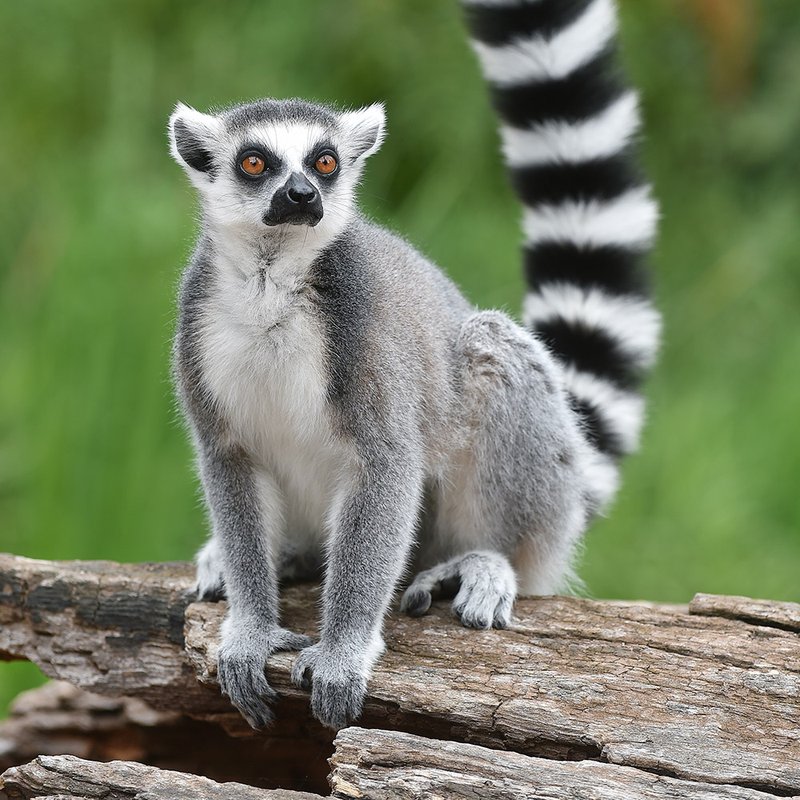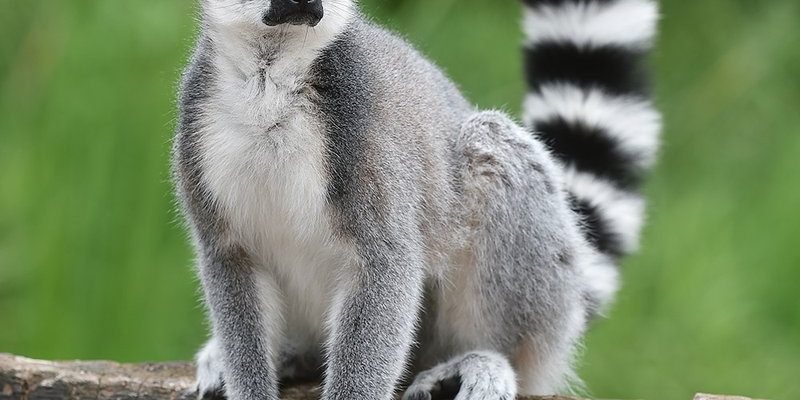
Imagine a time long before humans walked the planet, when ancient forests thrived and creatures roamed that looked vastly different from those we know today. The ring-tailed lemur, a species that has evolved over millions of years, thrives in Madagascar’s unique habitats. In this exploration, we’ll uncover how these fascinating animals adapted to survive in their environment, the role they play in their ecosystem, and the challenges they face today. So, pour yourself a cup of coffee, and let’s dive into the rich evolutionary history of the ring-tailed lemur!
Where It All Began: The Origins of Lemurs
To understand the history of the ring-tailed lemur, we first need to journey back to the Paleocene era, around 65 million years ago, shortly after the dinosaurs disappeared. During this time, the earth was a very different place. The climate was warm, and the forests flourished. This is when the early ancestors of lemurs began to emerge, likely split from other primates that were evolving elsewhere.
Here’s the thing: Madagascar was cut off from the African mainland millions of years ago, creating a unique evolutionary playground for species like lemurs. Isolated evolution is a fascinating concept—think of it like a group of friends going on a road trip, where they take different routes and end up with unique stories. The lemurs became a diverse group, evolving in their secluded environment. While other primates were adapting to different habitats worldwide, the ancestors of the ring-tailed lemur were crafting their niche on this island paradise.
Fast forward to around 40 million years ago, lemurs began to develop physical traits that would serve them well in their lush surroundings. With adaptations like larger eyes for better night vision, these creatures became better suited for life in the trees, snatching insects and fruit to eat. The ring-tailed lemur, in particular, began to stand out due to its unique features, including its distinctive tail that serves not only as a communication tool among its group but also as a balance aid when navigating the treetops.
A Closer Look at the Ring-Tailed Lemur
So, what makes the ring-tailed lemur so special? For starters, let’s talk about that iconic tail. The ring-tailed lemur’s tail can be more than two feet long, adorned with 13 alternating black and white bands. This isn’t just for show; it plays a critical role in their social interactions. Picture a vibrant parade of lemurs using those tails as flags to signal to one another in the dense shrubbery of Madagascar. They can even use their tails to communicate scent marks, which is a strategy for marking territory.
Social behavior is another fascinating aspect of the ring-tailed lemur’s evolution. Living in groups called troops, these primates showcase a unique matriarchal society. The females are dominant, which is quite rare for primates. This social structure plays a crucial role in their survival. By sticking together, lemurs can better protect their young and share resources like food and shelter. Honestly, there’s something quite charming about their close-knit community, making them relatable in many ways.
Their diet, primarily consisting of fruits and leaves, reflects a beautiful adaptation to their island habitat. While the abundant plant life offers them a buffet of options, it also presents challenges. Certain plants contain toxins, which can be harmful. Over time, the ring-tailed lemurs have developed a taste for the safe options available, showcasing their ability to adapt to the environment. It’s like learning which restaurants have the tastiest and safest dishes!
The Role of Climate in Evolution
Climate change is a significant player in the evolutionary history of many species, including the ring-tailed lemur. Madagascar has gone through various climatic shifts, impacting the habitat and availability of food. During periods of warming, the forests expanded, providing ample food and shelter. However, when cooler, dryer periods hit, the lemurs had to adapt quickly to survive.
These climatic shifts serve as a prime example of natural selection in action. Lemurs that could find food or navigate more efficiently in changing environments were the ones that thrived and passed their genes to the next generation. For instance, during particularly dry spells, lemurs with better foraging skills would likely gather enough resources to survive, while others might struggle and fade away. It’s nature’s way of ensuring that the best-adapted individuals continue the lineage.
The lemur’s evolution has also been shaped by the island’s unique flora and fauna. Madagascar is home to a wealth of endemic species, which means that many plants and animals exist nowhere else in the world. This rich biodiversity creates a complex web of interactions. The ring-tailed lemur has evolved behaviors and physical traits that allow it to coexist with these unique species, showcasing the intricate balance of ecosystems.
The Current Challenges Facing Ring-Tailed Lemurs
Despite their fascinating evolutionary history, ring-tailed lemurs face significant threats today. Habitat destruction is the primary concern. As Madagascar’s forests are cleared for agriculture or logging, the lemurs lose their homes and food sources. It’s heartbreaking to think about how these adorable creatures, after millions of years of evolution, find themselves battling for survival due to human activity.
Additionally, climate change continues to be a looming threat. Changes in temperature and rainfall patterns can lead to food shortages, adding stress to already vulnerable populations. The combination of habitat loss and climate change could lead to a decline in ring-tailed lemur numbers, potentially pushing them toward extinction. You might be wondering what can be done about it. Conservation efforts are crucial, aiming to protect their habitats and raise awareness about their plight.
In response to these challenges, organizations are working tirelessly to promote sustainable practices and protect the unique ecosystems of Madagascar. Education and community involvement are key. When people understand the importance of these creatures and their environment, they’re more likely to take action to protect them. It’s not just about saving the lemurs; it’s about preserving a unique piece of our planet that has amazing stories to tell.
Why Understanding Evolution Matters
You might ask, “Why should I care about the evolutionary history of the ring-tailed lemur?” Well, understanding evolution gives us crucial insights into the interconnectedness of life on Earth. It helps us appreciate the diversity of species and the complex relationships that exist within ecosystems. The story of the ring-tailed lemur is a reminder that all living things are part of a larger narrative.
Moreover, studying lemurs can shed light on our own evolution. As primates, we share a common ancestor with these fascinating creatures, making their history relevant to our understanding of human evolution. It’s like tracing the threads of a vast tapestry, where each thread contributes to a beautiful creation. Their adaptations to unique challenges help us think critically about our own environment and how we can better coexist with nature.
Additionally, the plight of the ring-tailed lemur serves as a wake-up call. It highlights the impact of human activity on biodiversity and the urgent need for conservation. By learning about these animals, we inspire action that can lead to meaningful changes in how we treat our planet.
The evolutionary history of the ring-tailed lemur is not just a tale of survival—it’s a reflection of resilience, adaptation, and the fragile balance of ecosystems. As these fascinating creatures continue to navigate the challenges posed by habitat loss and climate change, it becomes our responsibility to protect their future. Just like the vibrant rings on their tails, the stories of these lemurs connect us all.
So, the next time you think of Madagascar and its incredible wildlife, remember the ring-tailed lemur and the profound journey it has taken over millions of years. Let their story inspire you to consider how you can contribute to protecting not just them, but all the remarkable creatures that share our planet. After all, we’re all part of this beautiful web of life, and each of us has a role to play in ensuring its continuation.

